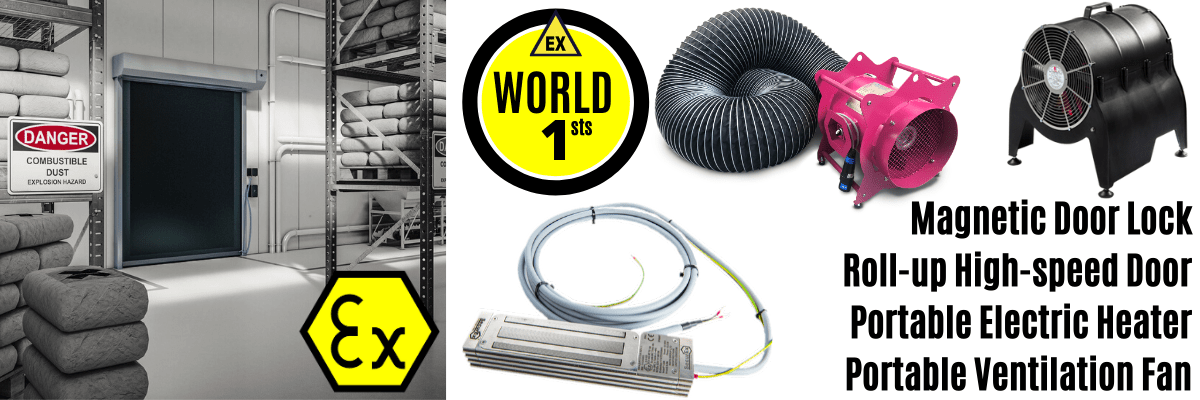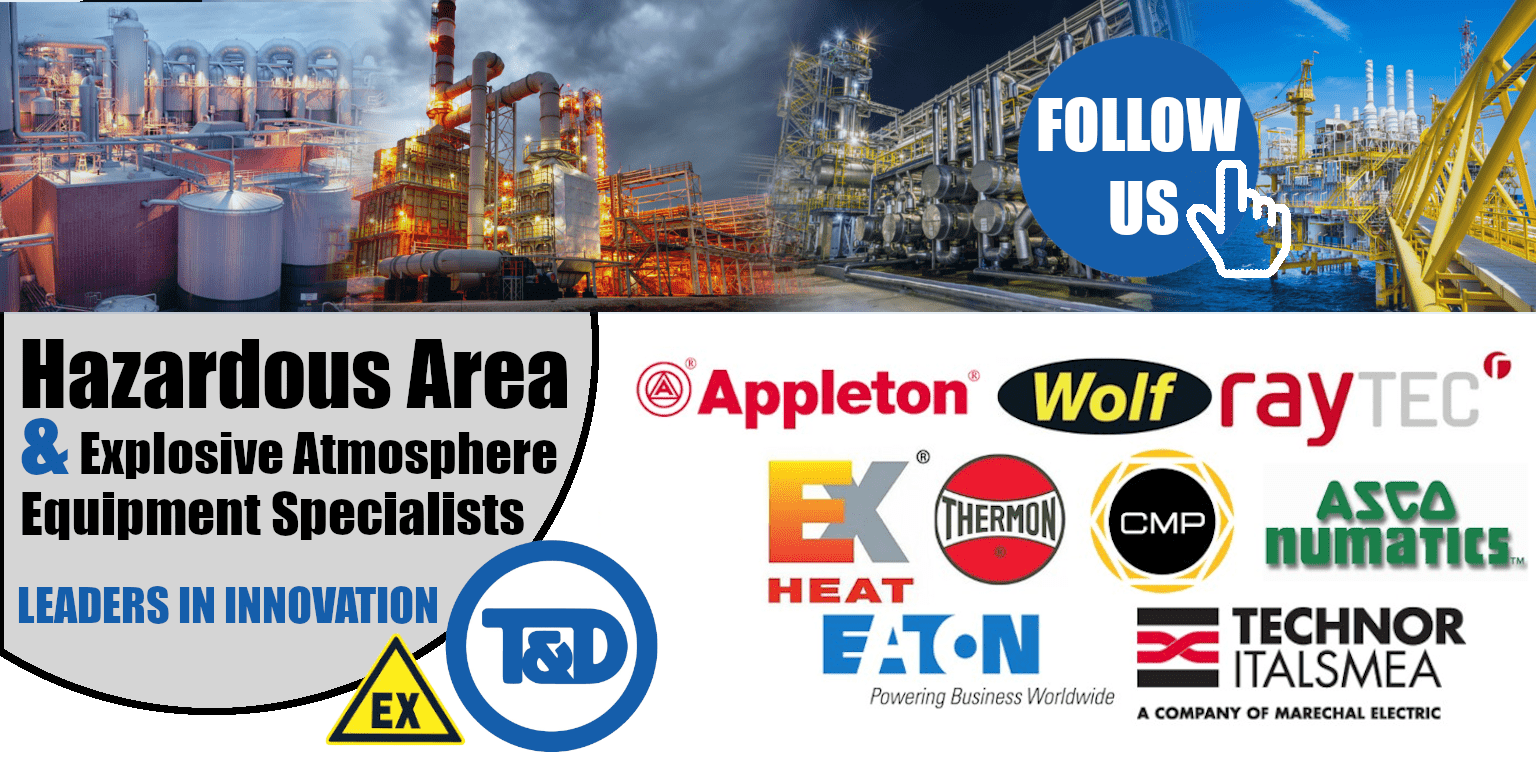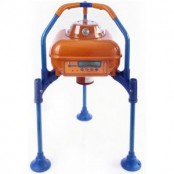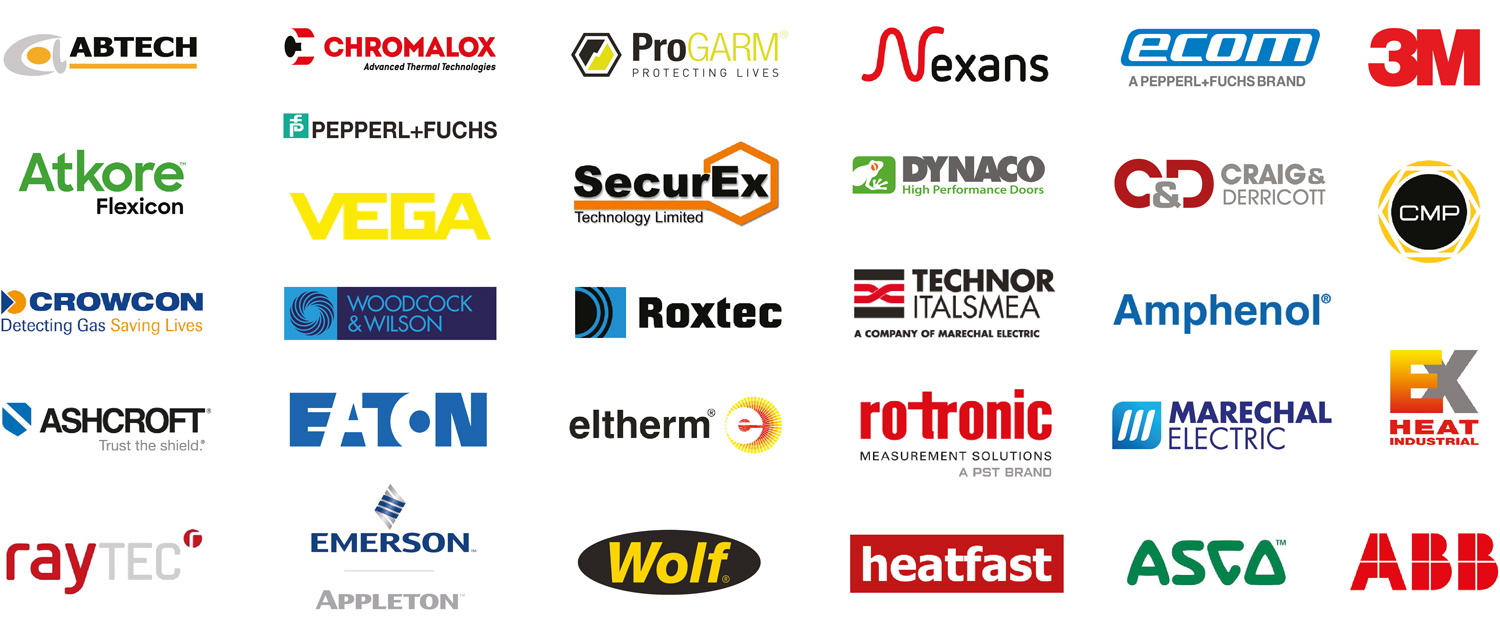Ammonia Gas Detection – NH3 Gas Dangers & Detectors
Published 12 Dec 2016
- By Chris Dodds : estimated reading time 16 minutes
Ammonia Gas Detection
This Gas Detection Blog article aims to provide information for people working in industries where they may be exposed to risks associated with ammonia gas escapes or leaks.
Firstly, the article will explore common applications/industries where ammonia is used and then discuss the potential risks to people, plant and environment from ammonia gas exposure.
The article includes guidelines and legislation set out by both the HSE & OSHA for the control of dangerous substances in the workplace.
Finally, the article looks at gas detection methods for ammonia and considerations that should be taken when selecting a gas detector which is fit for purpose.
Ammonia has been used for over a century as refrigeration gas and has no global warming potential or effect on the ozone level. The drawback of ammonia is the fact that it is very toxic with a pungent odour and, in high concentrations, can be flammable.
Hence, in order to avoid workplace injury and accident a gas detection system is a necessary risk-reduction measure.
A recent, well documented ammonia gas explosion occurred in West Texas killing 15 people and injuring more than 260. Reports from the time said the explosion razed an area the size of a small town to the ground and the explosion was felt 50 miles away.
The blast at the West Fertiliser Company (WFC) completely destroyed the manufacturing plant, caused widespread damage to more than 150 offsite buildings and and was one of the most destructive incidents ever investigated by the U.S Chemical Safety and Hazard Investigation Board as measured by loss of life to emergency responders and civilians.
The ammonia explosion was catastrophic and had such far reaching implications that the WFC filed for bankruptcy following the explosion.
Some people even compared it to a nuclear explosion. The picture shows the aftermath but the video captured by a local resident really does give some appreciation for the size of the ammonia gas explosion.
West Texas Ammonia Gas Explosion
ConAgra Natural Gas Explosion & Ammonia Release
Dangers of intentionally releasing natural gas into work areas. USCSB.
What is Ammonia Gas?

NH3 Ammonia Gas
Ammonia does occur naturally in the atmosphere all be it in trace quantities. The kidneys actually secrete ammonia to neutralise acid (you just learnt something new didn’t you). It is also used by the body as a building block for making proteins and other complex molecules.
Ammonia is a colourless gas with a pungent smell and in its purest form is known as anhydrous ammonia. It has the chemical symbol NH3 and is widely used in industries such as fertiliser, food, pharmaceutical and chemical.
Annual global production of ammonia is estimated to be 198,000,000 tonnes. Approximately 80% of this is used as fertilisers. Although it is considered difficult to burn it does pose the risk of explosion when stored under pressure and exposed to a high temperature ignition source.
Ammonia reacts violently with water, is considered corrosive and toxic as it will cause damage to skin, eyes and respiratory system and can even cause death if the person is exposed to sufficient levels. Before going any further, its worth a quick lesson on how dangerous substances like ammonia are controlled in the work place.
For over a century, ammonia gas has been used a refrigerant gas and as such has no global warming potential or effect on the ozone level. The main drawback of ammonia gas is the toxicity, pungent odour and in high concentrations its flammability.
There are at least four main problems with using ammonia gas as a refrigerant. These are:
- The protection of personnel on site. By using ammonia gas extra precautions must be taken to ensure the safety of the workers on site. This can be done with the use of both fixed and portable gas detectors.
- Ammonia gas will taint any food that is stored in cold stores or chillers resulting in a large loss of product. If there is a risk of ammonia reaching food storage areas then low level gas detection equipment must be installed.
- Gas detectors used in a plant room should be able to operate in a constant background as in these working areas there is always small leaks due to moving equipment, valves and joints therefore background ammonia can always be expected.
- Despite ammonia being a flammable gas, it is relatively difficult to set alight and can only be set alight at high concentrations (15.4% v/v). Despite this the gas should still be monitored for an explosion risk in any area where these levels could be possible. Explosion and fire risks should always be considered where there are high levels of ammonia being stored.

Hazardous Ammonia Gas Danger
Ammonia Gas Exposure & Its Effect on Health
Most people are exposed to ammonia gas from breathing its vapours and as it occurs naturally and in many cleaning products exposure can occur naturally.
Inhaling low concentrations of ammonia is likely to cause coughing and irritation to nose and throat. Ammonia gas gives off a very pungent smell which is likely to provide an early warning but just like hydrogen sulphide (the rotten egg smell) it can weaken the sense of smell (olfactory fatigue) meaning a person can think the exposure and risk has passed.
Exposure to higher concentrations will cause burning to the nose and throat and in extreme cases may result in respiratory failure.
Contact with skin or eyes will cause irritation at low levels but higher levels may cause burns and blindness. It is worth pointing out that the full extent of injury to eyes may not be apparent for up to 1 week after the initial exposure.
Inhalation of ammonia gas causes rapid onset of signs and its toxic effects are meditated through its irritant and corrosive properties. Typical features and symptoms will include irritation to the nose, throat and respiratory tract.
Where there is exposure to substantial levels of ammonia, burns of all depths can be felt in the oral cavity, nasopharynx, larynx and trachea. Exposure to a massive concentration of the gas can be fatal in as little as 2 minutes.
Despite the fact there is no specific antidote for exposure to ammonia gas, the effects can be managed and treated with most people surviving exposure. Immediate decontamination of the skin and eyes with large amounts of water is important.
In addition ingested ammonia should be diluted with water or milk.
Summary Of Toxic Effects Following Acute Exposure To Ammonia By Inhalation
| Ammonia Exposure Limit | Signs & Symptoms | |
| mg/m3 | ppm | |
| 35 | 50 | Irritation to eyes, nose and throat (2 hours’ exposure) |
| 70 | 100 | Rapid eye and respiratory tract irritation |
| 174 | 250 | Tolerable by most people (30–60 minutes’ exposure) |
| 488 | 700 | Immediately irritating to eyes and throat |
| >1,045 | >1,500 | Pulmonary oedema, coughing, laryngospasm |
| 1,740–3,134 | 2,500–4,500 | Fatal (30 minutes’ exposure) |
| 3,480–6,965 | 5,000–10,000 | Rapidly fatal due to airway obstruction, may also cause skin damage |
What Should You Do When Exposed To Large Quantities Of Ammonia?
Ammonia gas detectors are the best tool to use and posses in order to notify of the presence of NH3 gas. If exposure does occur, it is important to move away from the area in which it occurred. If you are indoors it is important to go outside, open all windows and evacuate to a safe place.
Quickly remove any clothing that has been exposed to the gas and any clothing that would normally be taken over the head such as t-shirts or jumpers, these should be cut-off to avoid any extra exposure.
Clothing should then be placed in a bag and disposed of. This should all take place away from children or vulnerable people. It is also important to wash any ammonia from your skin using soap and water and flush your eyes with large amounts of water.
To reduce the effects as much as possible it is important to keep flushing the eyes and skin with large amounts of water as there is no antidote for ammonia poisoning, however most people recover from the effects of exposure to this gas.
Work Place Exposure Limits & COSHH
In the UK the HSE set out guidelines for safe working practices. If a substance has been assigned a WEL (workplace exposure limit) value, then it will be subject to the regulations and guidelines set out under COSHH (care of substances hazardous to health).
This is a law which aims to provide employers with the information to prevent or reduce employees exposure to hazardous substances. This covers:-
- Finding out what the health hazards are
- Deciding how to prevent harm to health (risk assessment)
- Providing control measures to reduce harm to health
- Making sure they are used
- Keeping all control measures in good working order
- Providing information, instruction and training for employees and others
- Providing monitoring and health surveillance in appropriate cases
- Planning for emergencies
WELs are defined by the HSE as “concentrations of hazardous substances in the air, averaged over a specified period of time, referred to as a time-weighted average (TWA)”
LTEL (Long Term Exposure Limit) is the safe limit usually given in PPM (parts per million) over an 8 hour period.
STELs (Short Term Exposure Limit) is the safe limit usually given in PPM over a 15minute period and is designed to prevent minor effects to health such as eye irritation.
When employees may be exposed to a substance which is considered hazardous, COSHH states WELs must not be exceeded for the control of exposure to be considered effective.
In the case of ammonia, it is an employers responsibility to ensure that its employees are not exposed to levels above 25PPM (LTEL) and 35PPM (STEL).
Gas detectors, fixed and portable types, can and should be used to detect dangerous levels of ammonia and provide an early warning alarm.
DSEAR/ATEX Workplace Requirements & FSDF
Protective measures must be introduced to workplaces and industries where dangerous volumes and concentrations of flammable ammonia gas or vapour can develop – this is in order to comply with DSEAR (2002) and explosive atmosphere requirements.
DSEAR covers the primary legislation applying to the control of substances that can cause fires and explosions in the workplace and is referred to as the Dangerous Substances and Explosive Atmospheres Regulations 2002 (DSEAR) (SI 2002 No.2776
The Food Storage & Distribution Federation (FSDF) is the sole UK trade body that focuses on representing and supporting the interests of the entire food and drink logistics industry. The FSDF have produced self-assessment checklist for ammonia charged refrigeration systems to provide guidance about DSEAR compliance.
For instance, if all ammonia is located in the machinery room and the room meets the requirements of EN378:2008 then it is likely to be a simple task to demonstrate compliance with DSEAR 2002. Similarly, if there are no flanges, valves or equipment in enclosed spaces, such as a roof void or the cold space it is more likely to be compliant.
However, valve stations in a physical condition characterised by rusted pipework, leaks around liquid pumps and ammonia smells in roof void, evaporators and machinery rooms should undergo formal assessment.
Likewise, evaporators featuring ammonia detection systems, emergency ventilation, automatic electric breakers and valves (including solenoids) should be regularly calibrated as part of the ammonia system maintenance programme.
Exposure To Ammonia Gas From Refrigeration Units – R717
Within the food and beverage industry, refrigeration plays a key part in keeping produce at a controlled, low temperature.
Refrigeration systems typically use ammonia as it offers superior refrigerant advantages, is abundant and extremely efficient. Due to the high levels of ammonia in these systems, it is vital to have adequate gas detection solutions in place.
R717 is refrigerant grade high purity ammonia (NH3). The product typically is 99.98% pure with minimal levels of moisture and other impurities (< 200 ppm and < 5 ppm oil), making it ideal for use in all types of refrigeration systems, especially in the air conditioning industry.
R717 has a wide range of applications. It is particularly suited to working in the range from approximately 0°C to –30°C and hence is widely used for food preservation. This includes the chilling of liquids such as milk, beer and soft drinks, large cold storage facilities, meat processing and packing plants, large ice making plants and commercial refrigeration.
Other common applications include large air conditioning systems (chillers), industrial heat extraction and ice rinks.
Why You Need a Better Ammonia Gas Detection Sensor for Your Refrigeration System http://t.co/cLIek5fN9M
— Australian Mining (@ozmining) July 27, 2015
Hazardous Area Classification
The International Standard IEC 60079 Part 10-1 Classification of areas (Explosive gas atmospheres) sets out the essential criteria against which the ignition hazards can be assessed. The FSDF guideline document Hazardous Area Classification of Refrigeration Plants Using Ammonia (R717) as the refrigerant complements IEC 60079-10-1 providing detailed requirements for the hazardous area classification of permanent and temporary refrigeration plants using ammonia as the refrigerant charge.
Ammonia Exposure Limits
As can be seen from the table below the HSE provides safe work place exposure limits for ammonia. The long term exposure limit is 25PPM (parts per million) and short term exposure limit is 35PPM.
The PPM refers to the concentration of gas in air.
The Occupational Health and Safety Administration (OSHA) offer similar guidelines and also provide the following information on risk to humans when exposed to various levels:-
| Ammonia Level In PPM | Symptoms |
| 0-25 | Minor Irritation of the eyes and respiratory tract |
| 25 | Permissible Exposure Limit (HSE & OSHA) |
| 50-100 | Swelling of eyelids, conjunctivitis, vomiting, irritation of throat |
| 100-500 | Death can result from prolonged exposure |
Advice & Considerations For Ammonia Gas Detection
Portable and fixed toxic gas detectors should be considered in any workplace where potential exposure to gas leaks for personnel is considered a risk. Gas detectors can save lives but only if the correct gas detection measures are put in place and the user is adequately trained to use and understand such a measure.
When measuring toxic gases such as ammonia, gas levels need to be detected in PPM as opposed to flammable gases which are measured in % volume. Here lies one issue which the HSE have recently reviewed and published a document concerning alarm settings for toxic gas detectors.
Selecting the correct alarm levels should involve dutyholders discussing the toxic gas risk and the type of equipment be used.
However, it is often the case that a detectors alarm setting are set to default which may not always be suitable for the environment in which they are being used.
The starting point for setting any alarms should follow guidelines set out in EH40/2005 if the gas is listed. Not all are. The HSE review points out the following for consideration:
- The source(s) characteristics and potential rate of toxic gas build-up.
- Whether egress is difficult and/or takes an especially long time or emergency conditions;
- Background variations and events from the process and instrumental effects, which may trigger “spurious” alarms;
Once the set points have been agreed it is not necessary “job done”. The user may need to adjust the alarm levels depending on real time events in the environment where the detector is being used. To do this may require analysis of data over a given period of time.
Fixed and portable gas detectors now come equipped with data logging facilities which can be downloaded to analyse time/frequency of alarms as well as reporting bump testing results.
There are several gas detector manufacturers and all have a range of fixed and portable gas detectors.
T&D are authorised distributors for Crowcon and Honeywell gas detection equipment. All have a wide range of single and multi gas detectors for both flammable and toxic gases.
Gas Detectors – Which Type Should I Use?
The answer is far from straight forward but below is a quick step by step guide.
I should say at this point it is always the end users responsibility to ensure any gas detection system is fit for purpose but companies such as ourselves are here to provide advice and technical assistance where possible.
1- Identify Risk – a risk assessment should always be carried out to identify potential risks and hazards to workers. If flammable and/or toxic gas is considered a risk, gas detection should be considered as a suitable measure to reduce the risk.
2- What Gases Need To Be Detected – is it a single gas or do multiple gases need to be detected. Is oxygen deficiency a concern. The source of gas leak should be considered as this information will be used to identify the location and quantity of gas detectors required.
3 – Environmental Conditions – Temperature, humidity and pressure can all effect the accuracy and the functionality of a gas detector. Further there are some products used in industry such as silicone which can poison a gas sensor making it redundant.
The range of portable and fixed gas detectors supplied by Thorne & Derrick are configurable by gas with a wide range of options for the detection of ammonia gas. The Crowcon Xgard and TSgard-IS+ are available for fixed gas detection.
In addition, the Crowcon Gasman, Crowcon Tetra 3, Crowcon Gas-Pro and Crowcon Tetra are available for portable gas detection.
4 – Product Functionality – Is the gas detector part of a safety integrity loop, does it need local display, remote monitoring, data logging facility etc.
5 – Ease of Use & Maintenance – Any gas detector should be easy to use. Its human nature to take short cuts so a complicated user interface is only more likely to result in misuse or “no use” (It happens) Routine maintenance should also be considered.
Different types of gas sensors require different types of maintenance. A catalytic bead type sensor are lower cost and can be subject to poisoning meaning they require regular routine inspection and maintenance. In contrast Infra Red sensors are not susceptible to poising so require less maintenance but are more expensive to buy.
The range of portable and fixed point gas detectors from T&D are suitable for configuring to specific requirements and can be used to detect ammonia among many other toxic and flammable gases.
Whatever your gas detection instrument requirement, whether portable or fixed gas detector, for industrial and hazardous areas contact Thorne & Derrick for specialist technical support.
There are no specific guidelines for detection of ammonia but the HSE does provide guidelines for certain gases, types of gas detectors and certain industries.
More Reading
- Methane CH4 Gas Detection – See How Crowcon Detects CH4 Gas Levels
- Gas Detection In The Food Processing Industry Using Portable Gas Detectors
Flame, Heat, Gas Detectors & Detection Systems
![]()
Hazardous area industries including offshore oil/gas platforms and FPSOs, onshore oil refineries, processing plants, pipelines, storage farms and LPG/LNG plants all utilise or produce a wide range of hazardous flammable liquids and gases that can be detected using correctly specified flame and gas detectors.
Detecting toxic and flammable gases requires the detectors to be classified and certified according to the specific IECEx or ATEX standard – we distribute flame and fire detectors manufactured by Spectrex to operate in the harshest environmental conditions including self-contained stand-alone devices designed for direct connection to control and alarm systems or automatic fire extinguishing systems.
Our range of Hazardous Area Fire & Gas Detection System products also includes Explosion Proof Warning Systems & Hazardous Area Lighting – comprehensive range of intrinsically safe, flameproof and explosion proof alarm sounders, sirens, bells and horns, loudspeakers and beacons.
♦ LV Power Products | Junction Boxes & Enclosures ATEX | Plugs ATEX | Control Stations ATEX | Isolators ATEX

Thorne & Derrick | Detecting Flame | Heat | Gas
Experts in Equipment
for Explosive Atmospheres
FOLLOW US
Follow our Showcase Page on LinkedIn to receive hazardous area product innovations, industry news, whitepapers, videos, technical tips and training webinars for professionals involved in the explosive atmosphere industries.








